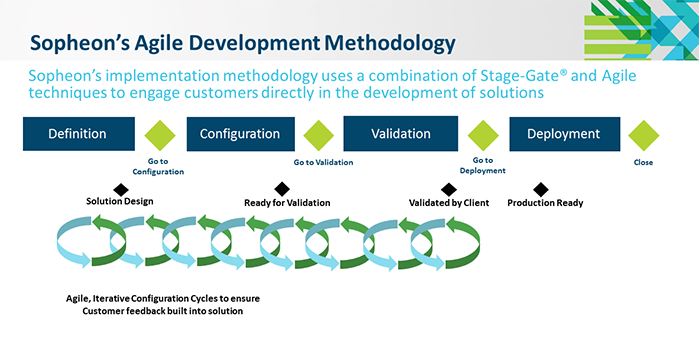In part one and part two in this series, we examined the “low hanging fruit” where Agile principles and supporting systems can empower a more effective business process in today's digitally-enabled and ever-changing atmosphere. In this final post of the series, we'll tackle leveraging Agile principles in New Product Development (NPD) work streams.
The biggest challenge non-software companies face in leveraging an Agile mindset in their NPD practices is weighing risk with cost.
Due to the high capital cost to launching engineered and manufactured products, it is not feasible to launch a ‘version 1' of a product and iterate further on the design over time like in Agile software development. These iterations might cause rework in the factory or supply chain that can result in a cost prohibitive financial situation that no longer supports the original business case. Companies focused on driving top-line business growth through innovation and NPD can benefit greatly when leveraging the positives of Agile principles into their process of building real products.
Applying Agile Methodology At The Beginning Of NPD
The easiest area to apply Agile principles to is the concept phase. It is imperative to develop prototypes and proof of concepts that get shared internally and, more importantly, externally with the target consumer. Gaining a full understanding of the end user's emotional response to a future product is paramount before entering into the design phase for that new product. For example, utilizing the cost-efficient 3D printing technology to test samples to prompt opinions is making this a viable option to many firms, just like tasters can be used to facilitate target consumer responses.
For example, solid product testing was conducted very early in the development-phase of the first Blackberry® offering. Blackberry used a cardboard prototype to introduce a new mindset of how a phone could become a valuable business tool. It is too bad, perhaps, that they didn't continue with these practices when they naïvely believed, without a doubt, that customers would never want a device without a keyboard. If they had, they might still be relevant today.
Agile principles can also be applied by implementing natural feedback loops, or “sprints” if you wish, within the design and develop phases of the product lifecycle.

By embedding these rapid feedback cycles, teams can share progress along the way instead of just emerging at the end of the phase for a Go/No-Go review. Within each of these cycles, ask the team to focus on concerns or questions that can immediately impact the success of the product. Think both externally and internally: What is the market sentiment? What new capabilities will be needed to achieve set goals? By asking the team to focus on the questions of success with smaller iterations embedded in the gated process, the significant benefits of a truly gated process will be rapidly apparent.
Too often with long, drawn out and overly bureaucratic phases, the teams (and the stakeholders) lose sight of the reason for gate reviews in the first place, i.e., ensuring the right questions are answered to establish future success of a product about to be heavily invested in. Perhaps as importantly, because these feedback loops are shorter and occur more frequently, the teams are empowered to adapt based on new insights and learnings.
Let's revisit the Blackberry example. We will never know whether Blackberry would have retained the market share it lost to Apple® and Android® devices. But, if instead of launching the Blueberry (a next generation keyboard device) they would have invested earlier in the Blackberry Storm (their touch device), then maybe they would not have wasted the money on a product failure in a market that had moved on.
Leveraging Agile principles in your business from your strategic planning process through your new product development processes will make you more responsive to the rapidly changing environment in a way that will help you launch more successful offerings, more regularly.
Bonus Content
- Resource hub: Strategy-Execution
- Resource hub: Agile Stage-Gate
- Article: Infuse Agility into Stage-Gate and Drive Speed to Learning and Speed to Launch
- On-Demand Webinar: Using Accolade to Manage Agile Software Development Processes




